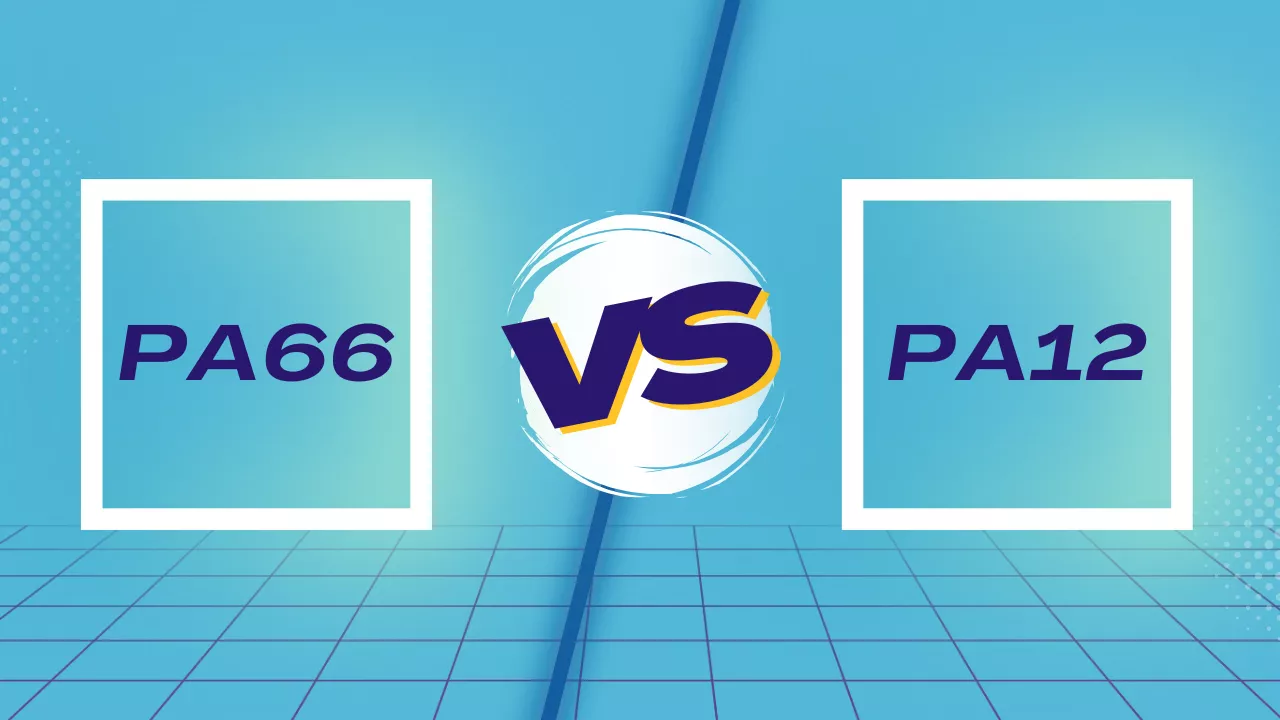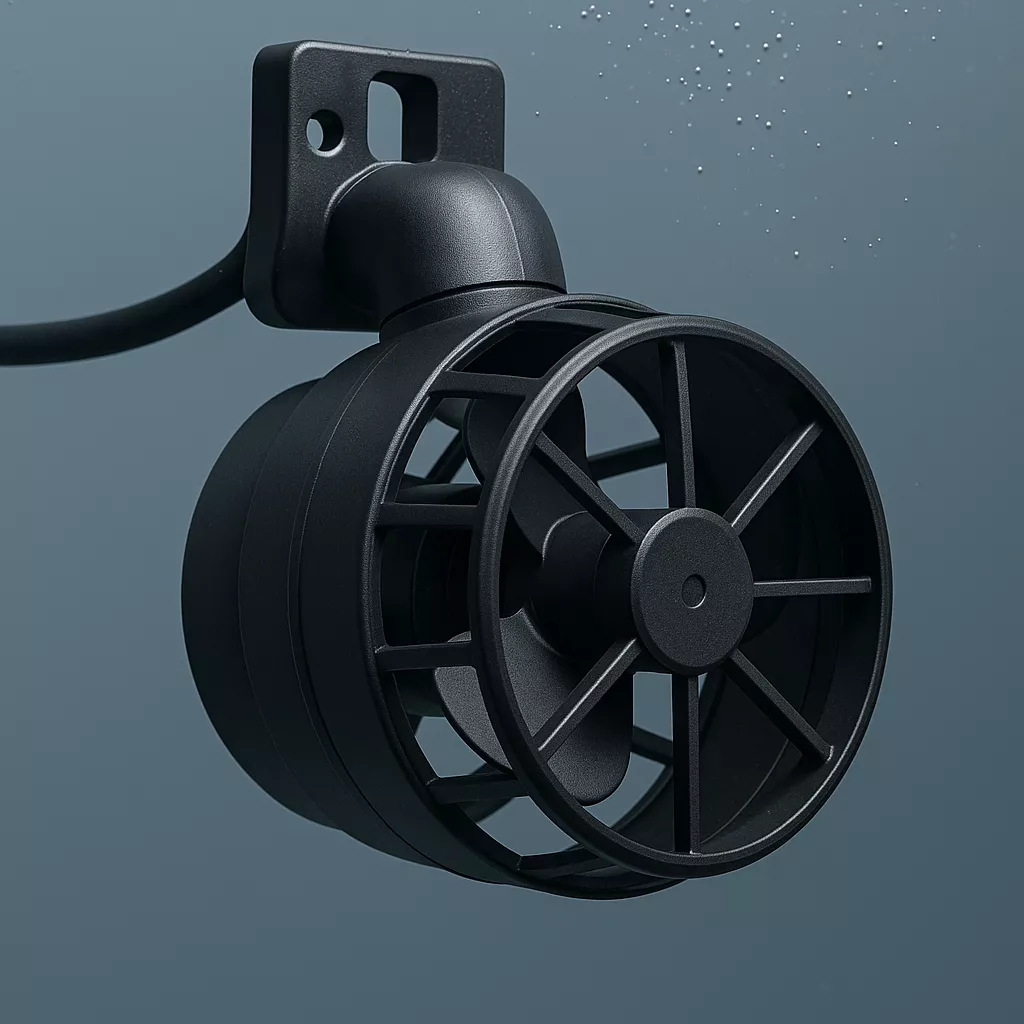When choosing engineering plastics for industrial or automotive components, nylon materials such as PA66 and PA12 consistently stand out. Both belong to the polyamide (PA) family, yet their mechanical strength, thermal resistance, and environmental performance differ significantly. This article compares PA66 vs PA12 in terms of properties, cost, and applications, helping engineers and procurement teams decide which material is the best fit.
Before diving into applications, here's a side-by-side comparison of PA66 and PA12—covering mechanical, thermal, and processing properties to help guide material selection.
📌If you're also comparing other nylon types, check out our detailed guide on PA6 vs PA66: Difference and Comparison for additional insights on performance and cost balance.

PA66 vs PA12: Key Properties Comparison
| Property | PA66 | PA12 |
|---|---|---|
| Water Absorption | High (~1.2%) | Very Low (<0.25%) |
| Dimensional Stability | Affected by humidity. More stabilized with additives, such as glass fiber or mineral fillers. | Excellent, even in humid conditions |
| Melting Point | ~260°C | ~180°C |
| Stiffness | High | Very Low |
| Flexibility | Rigid | Flexible and tough |
| Toughness | Brittle as GF levels gain | Retains impact strength with GF |
| Chemical Resistance | Good | Excellent |
| UV Resistance | Requires additives | Requires additives |
| Processing | Needs higher temperature | Easy to process, stable flow |
| Material Cost | Lower | Very High |
| Density | 1.13 | 1.01 |
Based on these property differences, here's when PA66 or PA12 is typically the better choice.
When Should You Choose PA66 (Nylon 66)?
PA66, also known as Nylon 66, is a semi-crystalline polymer known for its high mechanical strength, thermal resistance, and structural rigidity. It remains one of the most widely used structural materials for high-load and high-temperature components.
Applications suited for PA66:
- Engine covers and under-the-hood components
- Structural brackets and mounts
- Electrical connectors and relay bases
- Battery module support frames
- High-temperature housings (with flame retardant or GF grades)
📌To explore how glass fiber reinforcement improves nylon performance, see our article on PA GF Composites.
Key advantages of PA66:
- Higher melting point (~260°C)
- Superior stiffness at elevated temperatures
- Widely available and cost-effective
Limitations to consider:
- Moisture uptake can lead to dimensional changes
- More brittle when reinforced heavily with glass fiber
- Requires careful processing and conditioning
In short, PA66 is preferred when stiffness, heat resistance, and cost efficiency matter most. PA12, however, provides a completely different balance—offering flexibility, chemical resistance, and excellent long-term dimensional control. For applications that require both high stiffness and enhanced impact strength, consider our impact-modified/GF reinforced PA66 , engineered to improve toughness and fatigue resistance while maintaining excellent mechanical stability.
When Should You Choose PA12 (Nylon 12)?
PA12 is a more flexible, chemically resistant nylon with significantly lower water absorption and better long-term dimensional control. It is ideal for parts exposed to humidity, outdoor conditions, or aggressive chemicals, where stability over time matters more than short-term rigidity.
📌To better understand how PA12 compares with other nylons, see our article on PA6 vs PA12—covering flexibility, processing stability, and moisture resistance in detail.
Applications suited for PA12:
- Sensor housings and fluid system connectors
- Pneumatic fittings and air brake lines
- Wire harness protection in EV and electronic modules
- Outdoor electronic enclosures
- Structural parts in humid or marine environments
Key advantages of PA12:
- Lightweight, suitable for weight-sensitive parts
- Extremely low moisture absorption (<0.25%)
- Excellent resistance to fuels, oils, greases, and salts
- Maintains tight tolerances over time
- Can be molded with a smooth, fiber-free surface finish
- Flexible and impact-resistant—even when glass-fiber reinforced (e.g., PA12 GF30)
Limitations to consider:
- Higher material cost than PA66
- Lower heat deflection temperature (HDT)
- UV resistance requires stabilization additives
In short, PA12 is the best option when moisture stability, chemical resistance, and long-term toughness are critical. To illustrate how these differences play out in practice, here's a real-world automotive case study.
Case Study – Submersible Fan in High-Moisture Environment
The original fan housing was made of unsaturated resin or metal, which posed challenges such as corrosion, recyclability issues, and degradation under long-term water exposure. After switching to PA12 GF30 (Ardlon® LSG6), the new housing achieved excellent dimensional stability and resistance to rust or hydrolysis, maintaining consistent sealing performance even after 1,000-hour water immersion testing. As a result, the fan's operational life increased by more than 2.5×, while eliminating corrosion and recyclability concerns associated with metal or thermoset materials.

📌You can also explore metal replacement potential with our post: Top Plastics for Metal Replacement.
Summary: Pros & Cons
✅ PA66 – Nylon 66
- Pros: High stiffness and rigidity, better thermal performance, lower cost
- Cons: High water absorption, brittle when reinforced, humidity affects dimensions
📌For a detailed overview of PA66's characteristics and advantages, read our in-depth article: What is PA66.
✅ PA12 – Nylon 12
- Pros: Excellent moisture and chemical resistance, dimensional stability, lightweight, tough, flexible, smooth finish
- Cons: Higher cost, lower thermal resistance, requires UV stabilization
📌Learn more about PA12's unique performance in our dedicated article: What is PA12.
PA66 GF30 (ASG6) vs PA12 GF30 (LSG6) — Quick Comparison
| Property | PA66 GF30 (ASG6) | PA12 GF30 (LSG6) |
|---|---|---|
| Base Resin | Polyamide 66 | Polyamide 12 |
| Density | 1.39 g/cm³ | 1.28 g/cm³ |
| Tensile Strength | ≈192 MPa | ≈110 MPa |
| Elongation at Break | 4–6% | ≈5% |
| Impact Strength | Good | Better |
| Heat Deflection Temp. (HDT/A) | ≈210°C | ≈170°C |
| Melting Point | ≈260°C | ≈185°C |
| Moisture Resistance | Moderate | Excellent |
| Dimensional Stability | May warp under humidity | Very stable under moisture |
| Recommended Use | High-load, high-temperature structural parts | Precision parts exposed to moisture or fuels |
Summary: PA66 GF30 offers higher rigidity and heat resistance, making it ideal for demanding mechanical parts. PA12 GF30 provides better impact resistance and moisture stability, ensuring long-term dimensional control in humid or fuel-contact environments.
📌To learn how different fiber types influence nylon performance, read PA GF vs PA CF: Glass Fiber vs Carbon Fiber Reinforced Nylon.
PA66 GF vs PA12 GF: Choosing the Right Reinforced Grade
If you're comparing glass fiber reinforced nylon materials, the choice depends on your performance priorities—strength and heat resistance vs. dimensional stability and moisture control.
| Grade | Suggested Use Case |
|---|---|
| PA66 GF30 | High-load structural parts exposed to high heat |
| PA12 GF30 | Precision parts exposed to moisture, fuels, or dimensional tolerance issues |
💡 Pro Tip: In some applications, PA12 GF30 outperforms PA66 GF30 in long-term dimensional control—even if PA66 offers higher initial rigidity.
Conclusion: Which Nylon Should You Choose?
In the PA66 vs PA12 comparison, the right choice ultimately depends on your application priorities:
- PA66 (Nylon 66): Best for high mechanical strength, rigidity, and cost efficiency at elevated temperatures—ideal for high-load structural parts, under-the-hood automotive components, and electrical housings.
- PA12 (Nylon 12): Best for dimensional stability, low moisture uptake, and long-term toughness—suited for connectors, tubing, sensor housings, and parts exposed to humid or chemically aggressive environments
- Reinforced Grades (GF/CF): For demanding applications, choose PA66 GF30 or PA66 GF50 for high-load, high-heat parts, or PA12 GF30 or PA12 GF40 for precision components requiring long-term dimensional control.
Ultimately, PA66 delivers strength and heat resistance at lower cost, while PA12 ensures stability and toughness in harsh environments.
Not sure whether PA66 or PA12 is the best fit?
Our Ardlon® GF/CF reinforced and impact-modified grades help you balance strength, dimensional stability, and chemical resistance.
👉 Get in touch today to discuss your requirements.
Ardlon® Solutions – Ready for Your Application
- Ardlon® ASG6 (PA66 GF30) – High-strength reinforced grade.
- Ardlon® ASG10 (PA66 GF50) – Extra-rigid, high-load applications.
- Ardlon® LSG6 (PA12 GF30) – Outstanding dimensional stability in humid or chemically aggressive environments.
- Custom-modified grades with GF/CF reinforcement, impact modification, or flame retardancy.
📞 Contact us today for TDS, sample requests, or technical consultation.
We help clients across automotive, electronics, and industrial sectors select the best-fit nylon materials—all around the world.

